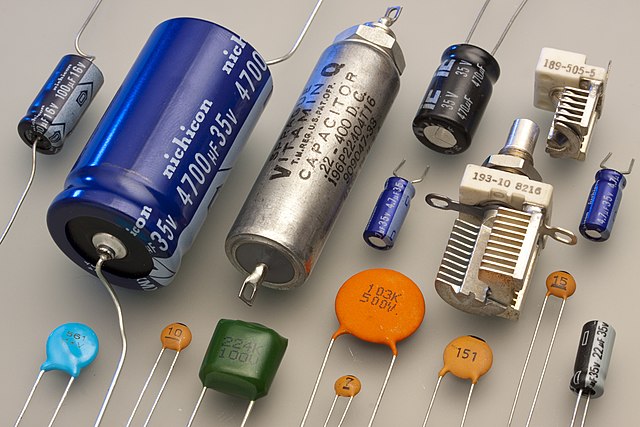A capacitor is one of the most essential components in the world of electronics. Found in everything from smartphones to industrial machines, capacitors are vital for energy storage, signal processing, and power conditioning. In this article, we will explore what a capacitor is, how it works, the various types of capacitors, and their real-world applications.
What is a Capacitor?
A capacitor is an electronic component that stores and releases electrical energy. It consists of two conductive plates separated by an insulating material called a dielectric. When voltage is applied across the plates, an electric field forms and energy is stored. This stored energy can be released when needed, making capacitors incredibly useful in electronic circuits.
The ability of a capacitor to store charge is measured in farads (F), though most capacitors used in everyday electronics have values in microfarads (μF), nanofarads (nF), or picofarads (pF).
How Does a Capacitor Work?
When a capacitor is connected to a power source, electrons accumulate on one plate, while the other plate loses electrons. This separation of charges creates an electric field and stores energy. Once the power source is removed, the capacitor can discharge the stored energy into the circuit. This basic principle allows capacitors to serve multiple purposes, including smoothing out power supply fluctuations, filtering signals, and coupling or decoupling different parts of circuits.
Types of Capacitors
There are several types of capacitors, each designed for specific uses:
- Ceramic Capacitors
Widely used due to their small size and low cost, ceramic capacitors are non-polarized and commonly found in high-frequency applications. - Electrolytic Capacitors
Known for their large capacitance values, electrolytic capacitors are polarized and typically used in power supply circuits. - Tantalum Capacitors
More stable than electrolytic capacitors, tantalum capacitors are used in situations requiring high reliability and long life. - Film Capacitors
These capacitors offer high stability and low inductance, making them ideal for precision circuits and audio applications. - Supercapacitors (Ultracapacitors)
Designed for applications needing rapid charge and discharge cycles, supercapacitors are used in energy storage systems, electric vehicles, and backup power supplies.
Key Functions of a Capacitor
Capacitors perform a wide range of functions in electronics:
- Energy Storage
Capacitors store energy that can be released quickly, making them essential in power conditioning and backup systems. - Filtering
Capacitors are used in conjunction with inductors to filter out noise and unwanted signals in power supplies and communication systems. - Timing Applications
In timer circuits, capacitors charge and discharge at specific rates to help control timing intervals. - Coupling and Decoupling
Capacitors can transmit AC signals between circuit stages while blocking DC, and they also help stabilize voltage and reduce noise by decoupling different parts of a circuit.
Applications of Capacitors
Capacitors are found in a vast range of applications, including:
- Consumer Electronics
From televisions to smartphones, capacitors play a role in signal processing, energy storage, and power regulation. - Automotive Industry
Capacitors help manage the electrical systems in vehicles, including lighting, infotainment, and safety features. - Renewable Energy Systems
In solar and wind energy systems, capacitors are used to store energy and ensure smooth power delivery. - Medical Equipment
Precision and reliability are crucial in medical devices, and capacitors help manage energy delivery in tools like defibrillators and imaging machines. - Industrial Machinery
Capacitors are used in motor starters, power factor correction, and signal processing in industrial environments.
Choosing the Right Capacitor
Selecting the right capacitor depends on several factors including:
- Capacitance value
- Voltage rating
- Temperature tolerance
- Size and form factor
- Application requirements
For high-frequency circuits, ceramic or film capacitors are preferred, while power supply applications may require electrolytic or tantalum capacitors.
Conclusion
In summary, a capacitor is a critical component in modern electronics. Its ability to store and release electrical energy makes it invaluable in countless devices and systems. Understanding the different types of capacitors and their functions can help in designing and troubleshooting electronic circuits effectively. Whether you’re a hobbyist, engineer, or tech enthusiast, mastering the basics of capacitors opens the door to deeper electronic knowledge and innovation.

